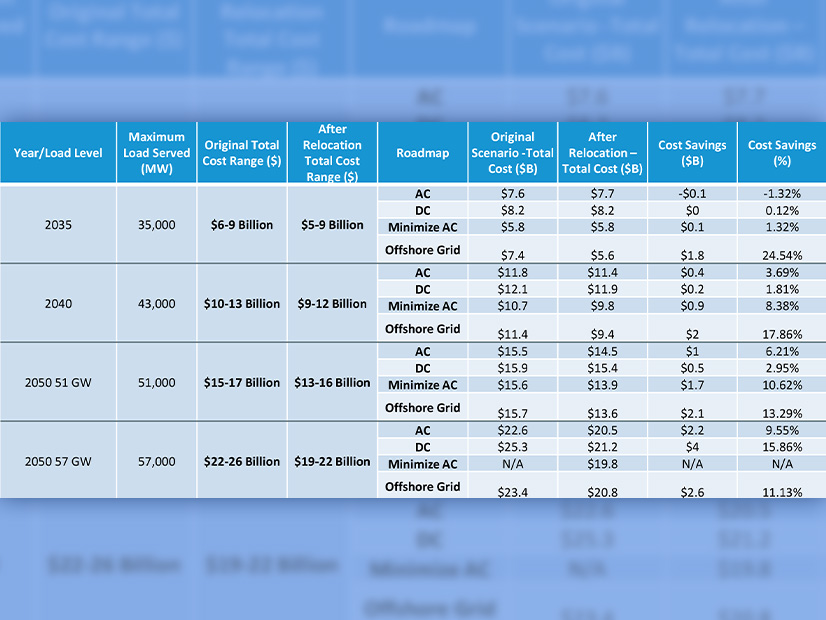Relocating two offshore wind points of interconnection (POIs) from Maine to Massachusetts could substantially reduce New England’s transmission upgrade cost requirements in the coming decades, ISO-NE told its Planning Advisory Committee on April 18.
Shifting the points of interconnection would decrease the need for north-to-south transmission upgrades, cutting the overall cost range for transmission upgrades to $19 billion to $22 billion by 2050 compared to the original $22 billion to $26 billion estimate from ISO-NE’s 2050 Transmission Study. (See ISO-NE Prices Transmission Upgrades Needed by 2050: up to $26B.)
“Location of offshore wind POIs are important, and results can vary significantly based on these locational choices,” said Liam Durkin of ISO-NE. “The offshore wind POI screening analysis will be one important step towards refining assumptions around offshore wind POIs.”
The analysis used the same methodology as the 2050 Transmission study, shifting just two of the POIs in the study. One of the key findings of the original study was the need for increased transmission capacity from northern New England to the Boston area.
Moving the two POIs south would reduce flows along the Maine-New Hampshire interface and the North-South interface in the winter, while the shifts would minimally impact summer flows, ISO-NE found.
The lack of summer effects stemmed partly from ISO-NE’s expectation that offshore wind output would decline significantly during the summer.
The 2050 Transmission Study considered four pathways to meet the transmission needs: an AC road map, a DC road map, an offshore grid road map and a plan focused on minimizing the need for new lines by upgrading existing infrastructure.
The POI analysis showed that shifting the two offshore wind interconnections would benefit all four pathways, saving the AC road map an estimated $2.2 billion, the DC road map an estimated $4 billion and the offshore grid road map an estimated $2.6 billion.
While ISO-NE initially found it could not meet its expected 2050 peak load of 57 GW through the “minimization of new lines road map,” the RTO found the POI shifts would make this road map possible, with an estimated cost of $19.8 billion.
Although this pathway relies the least on new lines, it still would include a few, as well as substantial line rebuilds.
“Rebuilds alone cannot successfully serve a 57-GW winter peak load along the North-South and Boston Import interfaces,” Durkin said.
ISO-NE projects a 57-GW winter peak but also emphasized the potential benefits of lowering the peak through demand-reduction efforts. The original analysis from the 2050 Transmission Study found that limiting the peak to 51 GW would reduce transmission costs by about $8 billion.
The updated analysis also found benefits of the POI shift with a 51-GW winter peak; taking the interconnection changes into account, the lower peak reduced the overall cost estimate to $13 billion to $16 billion.



